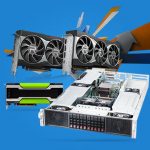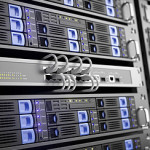Machine learning has become an essential tool for businesses and organizations looking to extract valuable insights from their data. However, machine learning algorithms require significant computational resources to train and optimize, which can be a major challenge for many organizations. Fortunately, GPUs (graphics processing units) offer a powerful solution for accelerating machine learning workloads. In this article, we’ll explore the advantages of using GPUs for machine learning in a comprehensive guide.
What is a GPU?
Before we dive into the advantages of using GPUs for machine learning, let’s first define what a GPU is. A GPU is a specialized type of processor that is designed to handle highly parallelizable workloads, such as rendering graphics or performing complex mathematical operations. Unlike CPUs (central processing units), which are designed for single-threaded performance, GPUs are optimized for parallel computing, making them ideal for machine learning workloads.
Also Read – How to Choose the Right GPU Server for Your Business
Advantages of Using GPUs for Machine Learning
1. Faster Training Times
One of the most significant advantages of using GPUs for machine learning is that they can dramatically reduce training times. GPUs are designed to handle large-scale parallel computations, allowing them to process vast amounts of data simultaneously. This parallel processing capability allows GPUs to train machine learning models much faster than CPUs. In fact, some machine learning workloads can be up to 100 times faster when running on a GPU compared to a CPU.
2. Enhanced Performance
In addition to faster training times, GPUs can also offer enhanced performance when it comes to machine learning workloads. GPUs are designed to handle highly parallelizable operations, such as matrix multiplication and convolution, which are common in machine learning algorithms. By offloading these operations to a GPU, organizations can achieve significant performance improvements compared to running the same workload on a CPU.
3. Cost Savings
While GPUs can be expensive to purchase initially, they can ultimately save organizations money in the long run. By reducing training times and improving performance, organizations can train machine learning models more quickly and with less hardware, ultimately saving money on computing resources. Additionally, GPUs can be more energy-efficient than CPUs, which can result in lower energy costs over time.
4. Improved Accuracy
Finally, using GPUs for machine learning can also lead to improved accuracy in machine learning models. This is because GPUs can process vast amounts of data simultaneously, allowing organizations to train models on much larger datasets. By training on larger datasets, organizations can improve the accuracy of their models and gain more valuable insights from their data.
Know More – Rent GPU Server for Deep Learning
Conclusion
In conclusion, GPUs offer a powerful solution for organizations looking to accelerate their machine learning workloads. By providing faster training times, enhanced performance, cost savings, and improved accuracy, GPUs can help organizations unlock the full potential of their data. As machine learning continues to play an increasingly important role in business, the advantages of using GPUs for machine learning will only become more significant.
Also read – Is Cryptocurrency Mining Still Profitable with Dedicated GPU Servers?



